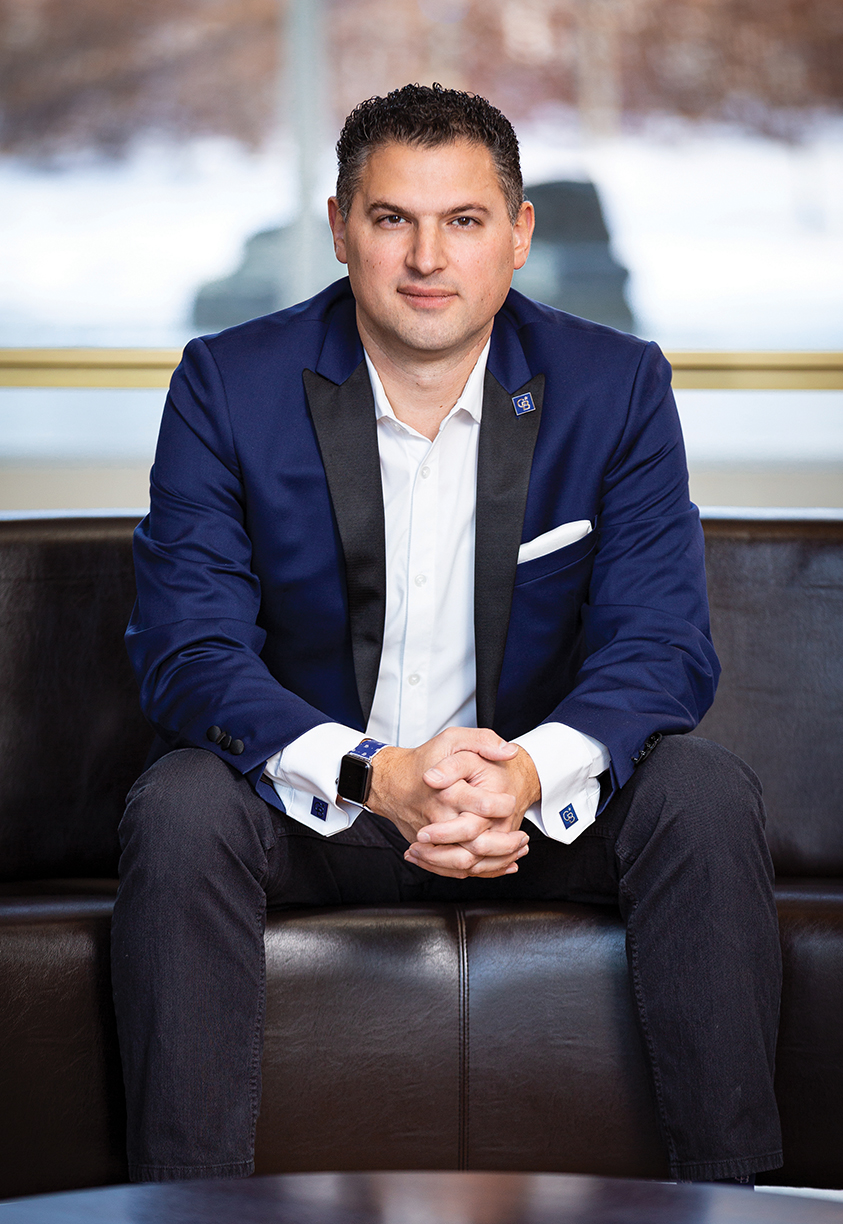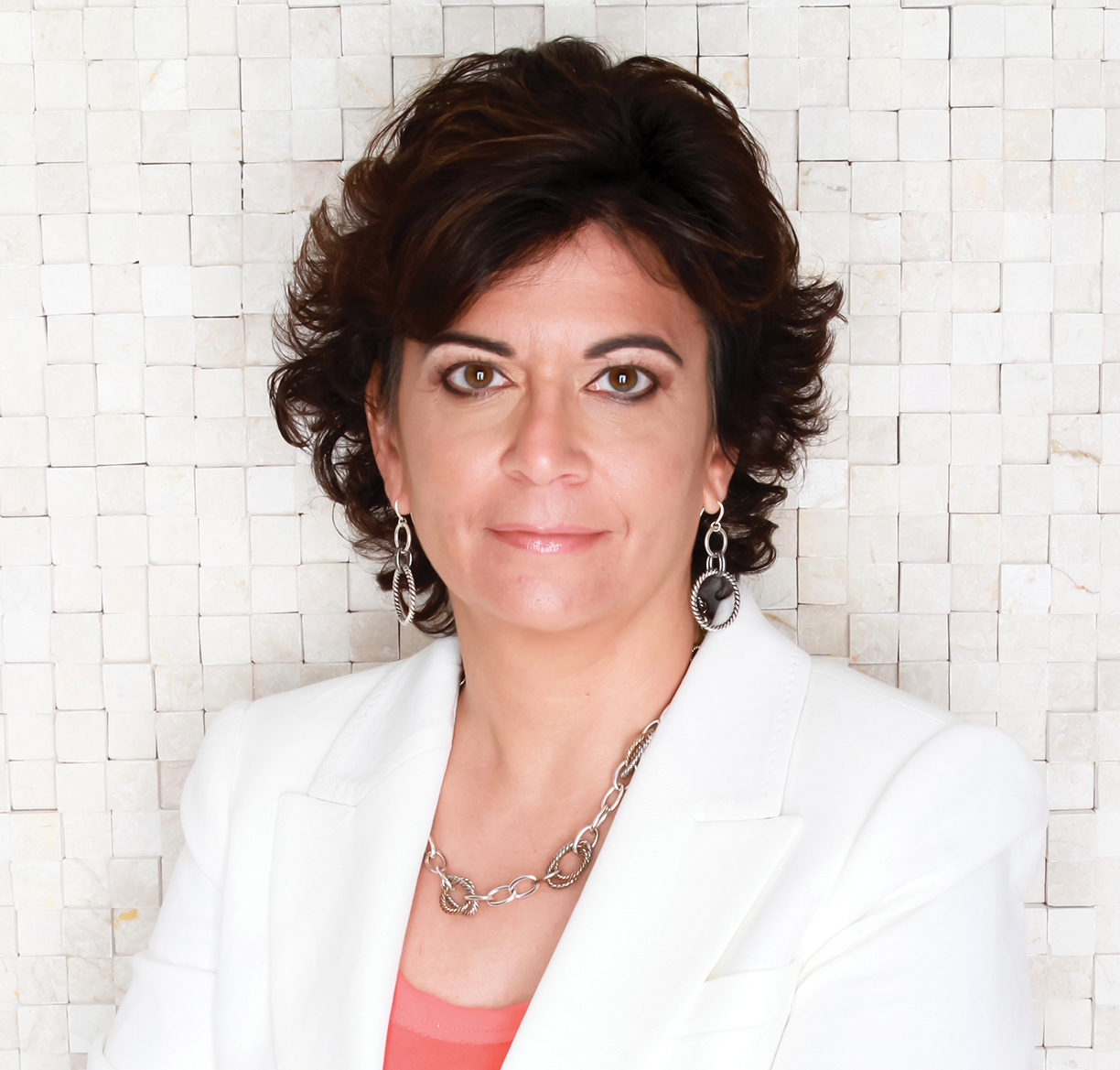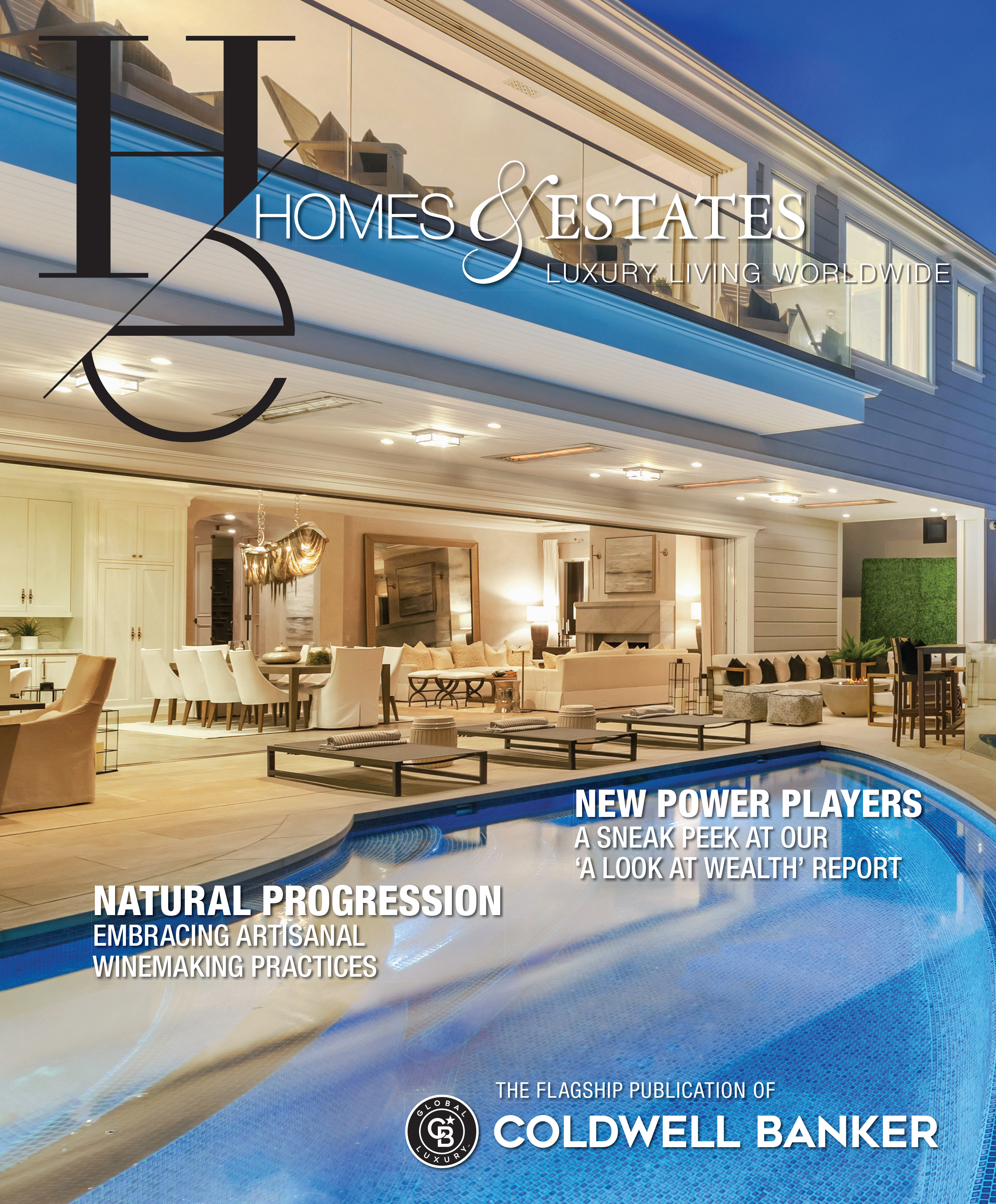David Marine, Michael Altneu and Diane Hartley talk about who’s leading luxury in 2021.
Metropolises are staging a comeback. Resort markets continue to be buoyed by affluent individuals buying second homes in record numbers. From urban repatriates and second-home owners to older millennials, boomers and Gen-Zers flush with cash, there is a new group of power players making an impact on high-end buying and selling in 2021.
A forthcoming report from the Coldwell Banker Global Luxury® program offers insights into these real estate influencers. To get a sneak peek at what’s inside “A Look at Wealth,” we spoke to David Marine, chief marketing officer of Coldwell Banker Real Estate LLC; Michael Altneu, vice president of luxury for Coldwell Banker Real Estate LLC; and Diane Hartley, president of The Institute for Luxury Home Marketing.
Homes & Estates: One of the findings tracked in the report is the unprecedented wealth growth in the U.S. from 2019 to 2021. Where do you see luxury real estate falling into this trajectory?
Diane Hartley: A recent study from Oxford Economics found that American household net worth increased by 16 percent from the end of 2019 through Q1 of 2021. This marked the largest 15-month stretch of gains since 2004. This growth happened in the top two income brackets, which are driving the luxury real estate market today. If you had wealth two years ago, you have even more wealth now. People have more money to spend on a different asset class, and their properties are worth more.
David Marine: Real estate has always been a marquee element in the luxury portfolio. After spending so much time at home, homeowners are now assessing whether they want to enhance their living space or dreaming about where else they can go. The luxury market thrives in this scenario. The opportunity for that ski chalet or beach destination is becoming a reality after a year of pent-up demand.
Michael Altneu: The affluent have always seen real estate as an asset class. The difference now is what kinds of homes they’re buying, how many they’re buying and why. Much of what’s been driving these purchases goes back to lifestyle. There has never before been such an intense shift in purchasing and consumer behavior on a global scale as we experienced in 2020. Space, location and health were viewed through a much different lens by every person in every market at exactly the same time.
H&E: Sales and prices of single-family detached luxury homes have been trending up each year since 2019. What’s driving demand from your point of view? Are the reasons why people are buying different from last year?
DM: There’s some “FOMO meets YOLO” going on. The events of 2020 forced people to realize that they want to make the best of where they reside. Perhaps they’ve been sitting on the sidelines and missing out on that dream place that they just haven’t jumped into yet. Plus, the ability to get greater value for a property gives them peace of mind when spending more on that next home. They’re saying, “Let’s buy that dream home. We only live once.”
MA: Remote-working capabilities allowed people to spread into other markets like never before and will continue to help drive demand in the future. Lifestyle has always been the key driver in the luxury real estate space, but now it’s at the forefront of everything. People sought out secondary homes in 2020 to gain more space and distance. We may see a greater focus on larger primary homes — ones that better encompass all aspects of their lifestyle.
DH: There are three groups of people impacting the current luxury landscape. You have the “FOMO meets YOLO” group, which often happens after tragic events. We saw a similar trend after 9/11. The second group is those greatly impacted by how much money they now have. During the height of the pandemic, people spent less money because they were staying home more, so they had greater savings. I saw a figure that had the U.S. net private savings rate in 2020 as one of our highest in history. The last influential group is the real estate community. I don’t think we talk enough about their vital role in buying decisions. The way real estate professionals bring a home to market today is greatly influencing the seller and the selling price. They’re emphasizing luxury staging, putting better homes on the market and building interest through pre-MLS “sneak peeks.” They’re not forcing anyone in this market to think twice about buying a home. They’re making the decision easy.
MA: I agree. The role of agents has increased tenfold since the pandemic. They aren’t just guiding the real estate purchase; they’re guiding all the important aspects of their clients’ lives. They have become lifestyle advisors and trusted members of their inner circle.

H&E: Who are some of the major influencers dominating the luxury housing marketplace?
MA: We’re going to see a shift toward the younger generations of wealthy in this report. Millennials, specifically “Golden Millennials,” as we’re calling the 35–40 age group, have always been influencers in their own right. They’re going to be leading the next generation of luxury real estate.
DM: We’ve heard for so long about the millennial marketplace and the great wealth shift that would eventually happen to that group. Well, they’re no longer the young, whimsical demo. This Golden Millennial demo (I’ve also heard some people call them “geriatric millennials”) will be the ones looking to drive this real estate market. Baby Boomers are the ones selling to them and are likely the ones benefiting from it. As Michael said, millennials are now part of a virtual workforce who can live anywhere, and their lifestyle demands are changing, which is also a factor in igniting the luxury real estate market as they start looking at second homes or vacation homes or even enhancing their primary residence.
DH: There’s also another demographic that we don’t talk much about: the 40–57 age group, the Gen Xers. I call them the “Buy-ups.” They are impacting the mid-level luxury market.
DM: We’re seeing this influence bear out in the market, as secondary home markets become long-term burgeoning markets. Idaho has become the new L.A. Parts of Texas and North Carolina are seeing an uptick in affluent out-of-state buyers. Places that weren’t on the luxury radar are suddenly starting to become destinations.
DH: People are taking their money out of high-cost areas like California and bringing it to markets like Coeur d’Alene, Idaho, which just exploded last year. I call it “discovery.”
H&E: Do you think the consumer mindset has changed enough that the exodus away from cities is going to last?
MA: The year-to-date sales numbers for attached homes are already trending up — which we’re interpreting as a positive sign that people are returning to dense marketplaces like New York, San Francisco and L.A. Cities have always been a magnet and global hub for high-net-worth individuals.
DH: We’re seeing a boomerang effect. The exodus we saw from cities in 2020 was more about acting on impulse than a long-lasting statement about how people feel about cities. The wealth effect is also a huge aspect. Luxury consumers always have a choice in what they do and where they live.
DM: We’ve seen this trend before in other markets, where an inciting incident forces a temporary exodus from metropolitan areas. The thing is, whether it’s New York, Miami or L.A., cities always bounce back. There’s an innate attraction to being at the epicenter of these cities. The prestige that comes with that won’t be lost for long, even when market conditions trend down.
MA: Cities will never disappear. They are the cultural hubs that power surrounding communities. People will always want to be in a place that embraces change and connectivity, to feel like they’re engaging something authentic and meaningful, something bigger than themselves.
DM: This also plays into our DNA as a company. Coldwell Banker was started in San Francisco, after the city was destroyed by the 1906 earthquake. We have always been a part of our local community’s fabric, and our agents have built and rebuilt the cities where people most desire to be connected. Cities bring people together.
H&E: Final thoughts?
DH: We have to look at the change in the climate of taxation. We are seeing a continuation of the trend of moving from high-tax states to low- or no-tax states. We’ll also look hard at the impact of the 2022 federal tax proposal on capital gains taxation.
DM: We’re seeing a positive climate change. Smaller markets previously not on the luxury radar are now coming into existence. It will be interesting to see which markets will be the new Aspen or Naples, Florida.
MA: In 2020, we were operating from a place of fear and uncertainty – but now we’re operating from a place of strength.

We’re seeing a positive climate change. Smaller markets previously not on the luxury radar are now coming into existence. It will be interesting to see which markets will be the new Aspen or Naples, Florida.

Cities will never disappear. They are the cultural hubs that power surrounding communities. People will always want to be in a place that
embraces change and connectivity, to feel like they’re engaging something authentic and meaningful, something bigger than themselves.

We have to look at the change in the climate of taxation. We are seeing a continuation of the trend of moving from high-tax states to low- or no-tax states. We’ll also look hard at the impact of the 2022 federal tax proposal on capital gains taxation.

Homes & Estates
This article appeared in the Fall 2021 edition of Coldwell Banker Global Luxury’s Homes & Estates magazine.
Watch for the upcoming release of the 2021 A Look at Wealth Report by visiting https://blog.coldwellbankerluxury.com/topic/real-estate-news



Leave a Reply